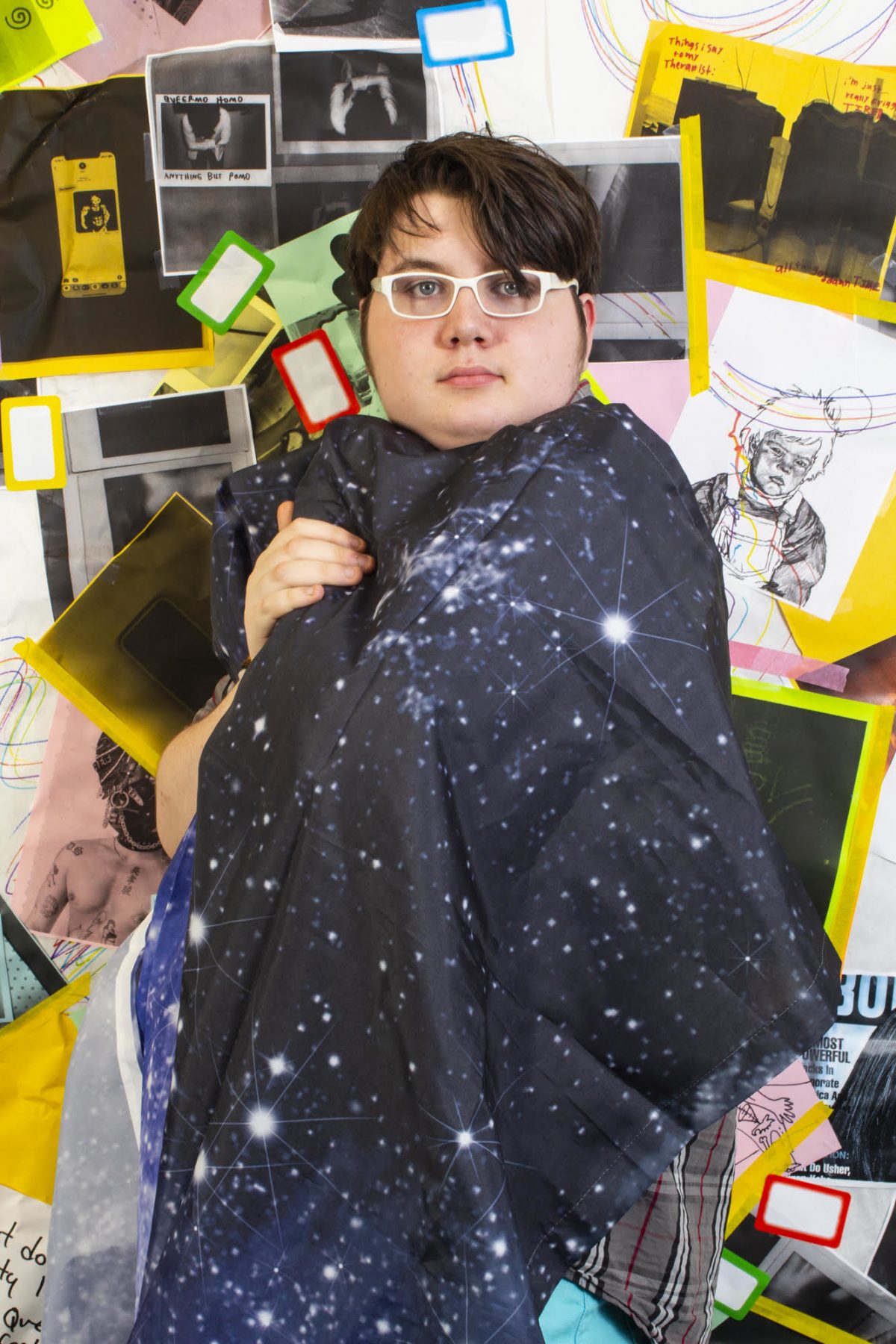Since its partnership with the Museum of Modern Art (MoMA) in 2011, Volkswagen has been committed to supporting educational programs that foster learning opportunities and connections between art and life.
One of the programs made possible by Volkswagen’s partnership with MoMA is Open Art Space, a relaxed weekly drop-in program for LGBTQ high school students and allies who are interested in thinking about, and making, art in a creative and welcoming environment. The program is facilitated by two artists but is shaped largely by each individual’s interests.
Free food, drinks and MetroCards are provided each week and no previous art-making experience is necessary. This past session, which ran from October through April, focused on creating zines, which are handmade booklets filled with drawings, collages, stories and other forms of expression. While the program centers on art and art making, that often takes a back seat to hanging out and listening to music in a space where the teens are free to be and express themselves.
In celebration of World Pride, MoMA Magazine stopped by Open Art Space to talk with participating teens and program facilitators during the last session of the season.

What role does art play in creating a safe space?
Theo Haegele: “I mean art can be whatever! It’s great that it can be whatever. Because you’re the artist and all art is part of the artist. So, if art is able to be whatever, then you’re allowed to be whatever within the space of art.
I love MoMA and I’ve done a ton of programs here, like Open Art Space. It’s a sort of exchange, not just with your fellow peers, like within the group, but also with all the artists on the walls and the history. What makes a safe space? Exchange.”

What is your favorite part about Open Art Space?
Nicholas Amiama-Gomez: “My favorite part about Open Art Space is the freedom that it gives people when they come here. It’s a type of freedom that they can’t even get at home especially if the home isn’t as accepting. It allows people to express themselves through different mediums of art, and the different people that students can relate to when they come and visit. We’re allowed to have such a great time because of the type of freedom we get here.”

What are your tips for fostering a community for LGBTQ+ teens and allies?
Maya Jacob: “I think education and having a one-on-one conversation with people. And showing people that we can talk about whatever you have questions about and make it not scary, something that has to be stigmatized.”
What does art mean to you?

Kelly Williams: “Art means a lot of different things to me. I think it means just being able to express yourself verbally, physically, emotionally, with a lot of different aspects—meaning it could be in person, paper to pen, it could mean just being yourself around people.”
What is it like to co-create a space for teens?
Kerry Downey: “Because it is drop-in, the dynamic is really changeable and unpredictable. I find I have to go with the flow. When the energy is low and I try too hard to direct it, I’m letting my own anxieties run the ship. It’s different than a classroom, where you’re trying to guide students to achieve specific learning goals. Our goals are that participants should feel good and want to return. Our space should feel markedly different than school. If you want to talk about queer issues you can, or you don’t have to. Many of us don’t want to be solely defined as queer; we just want to just be because everywhere else we can’t.”
How does art function as a facilitator for this group?
Tali Petschek: “I don’t think that it has to be art to tell you the truth. It’s more about the activity of doing something together than it is about necessarily making art. I think art just happens to be something that is really fun to do as a group—together but separate. People can work together and collaborate, or just sit next to somebody and do their own thing. So, I think that can apply to other types of work, mediums, as well, and art just happens to be one of many that works particularly well for this age group and with the goal of creating community.”

